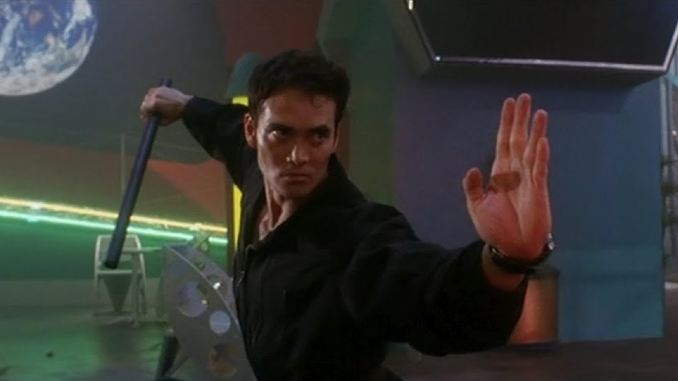Drive‘s Endearing Buddy-Action Vibes Should’ve Made Mark Dacascos a Star

14 years before Ryan Gosling took the wheel in Nicolas Winding Refn’s Drive (2011) and became both a real human being and a real hero by doing so, Mark Dacascos became a bio-enhanced human being and hero in Steve Wang’s Drive (1997). Unlike Gosling, Dacascos neither knew about routes nor cared about a time and place, and his window was several days longer than five minutes. But unlike Dacascos, Gosling didn’t have superhuman reflexes bestowed on him by a super-science MacGuffin embedded in his chest, so the point goes to Dacascos.
If the 1997 Drive’s September 4K UHD release courtesy of 88 Films has any lessons to teach (and it has plenty), the most important is that Dacascos should have been a much bigger movie star. To most, he’s likely most recognizable as the Chairman of Iron Chef America rather than for the flurry of kicks, fists and funky head bops he plays in Drive. Granted, there are worse roles an actor can be recognized for: Halle Berry has made clear that she regrets starring in Warner Bros.’ Catwoman; Ben Affleck has had a hard time living down Gigli. That a cooking show came closest to establishing Dacascos as a household name in the U.S. rather than, say, The Brotherhood of the Wolf, shouldn’t be characterized as ignominious. Iron Chef was, after all, a popular brand in its own right.
At the same time, there’s meaningful injustice to Jackie Chan achieving household-name status in the U.S. around the time Drive went straight-to-video, predating Rush Hour by one year and landing on small screens two years after Rumble in the Bronx. Chan, like fellow international stars Jet Li and Chow Yun-Fat, headed stateside as the Hong Kong movie industry crumbled, a product of factors including, but not limited to, the 1997 Asian financial crisis; overproduction expending quality; and the birth of the Category III rating, an appellation slapped on both softcore porn and grimy video nasty style films like The Untold Story and Ebola Syndrome.
Maybe in an alternate timeline where Hong Kong cinema didn’t eat itself alive, and stars like Chan, Li and Chow, as well as major directors like John Woo, didn’t collectively go seek new fortune abroad, Drive would have enjoyed breathing room and found a proper 1990s audience. Then again, Dacascos’s filmography included a fistful of bombs, notably 1994’s Double Dragon adaptation and, worse, 1996’s notorious and possibly cursed adaptation of The Island of Dr. Moreau. Dacascos played a mercifully small role in the lumbering disaster, but without the backbone of a strong résumé, it’s possible that the film made it difficult for him to escape its reputation with studios or audiences.
-

-

-

-

-

-

-

-

-

-

-

-

-

-

-

-

-

-

-

-

-

-

-

-

-

-

-

-

-

-

-

-

-

-

-

-

-

-

-

-








































